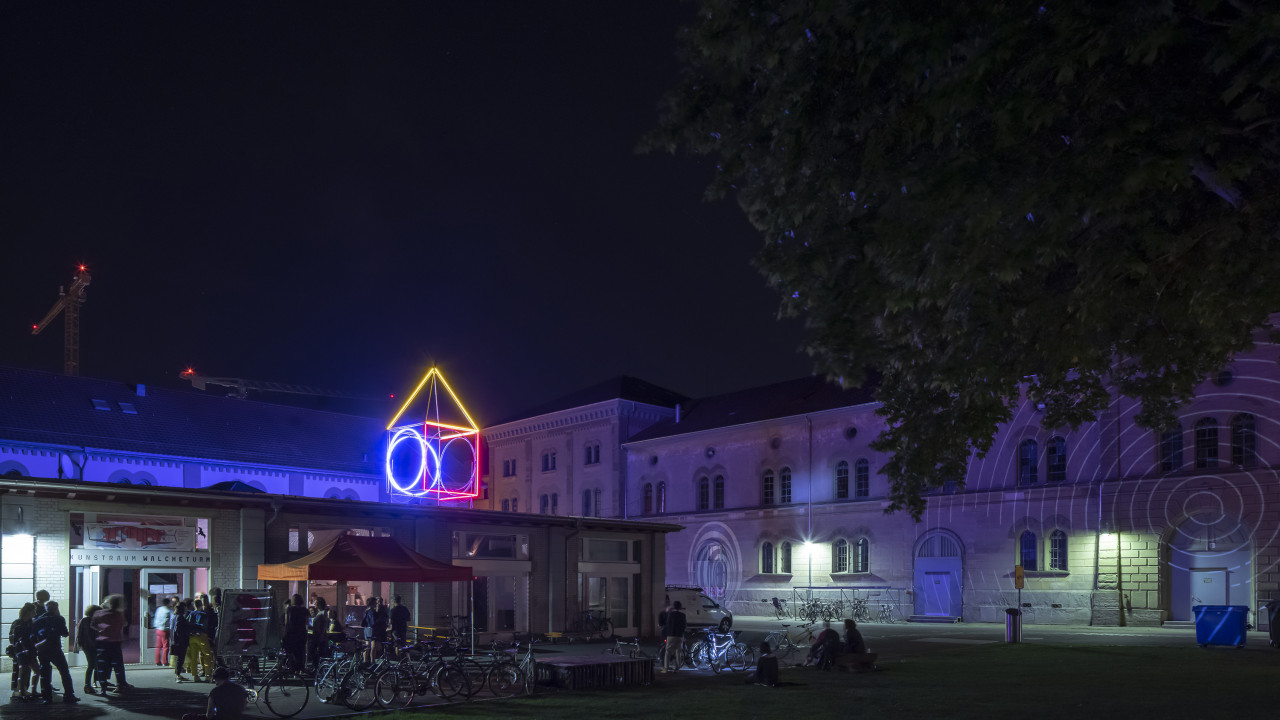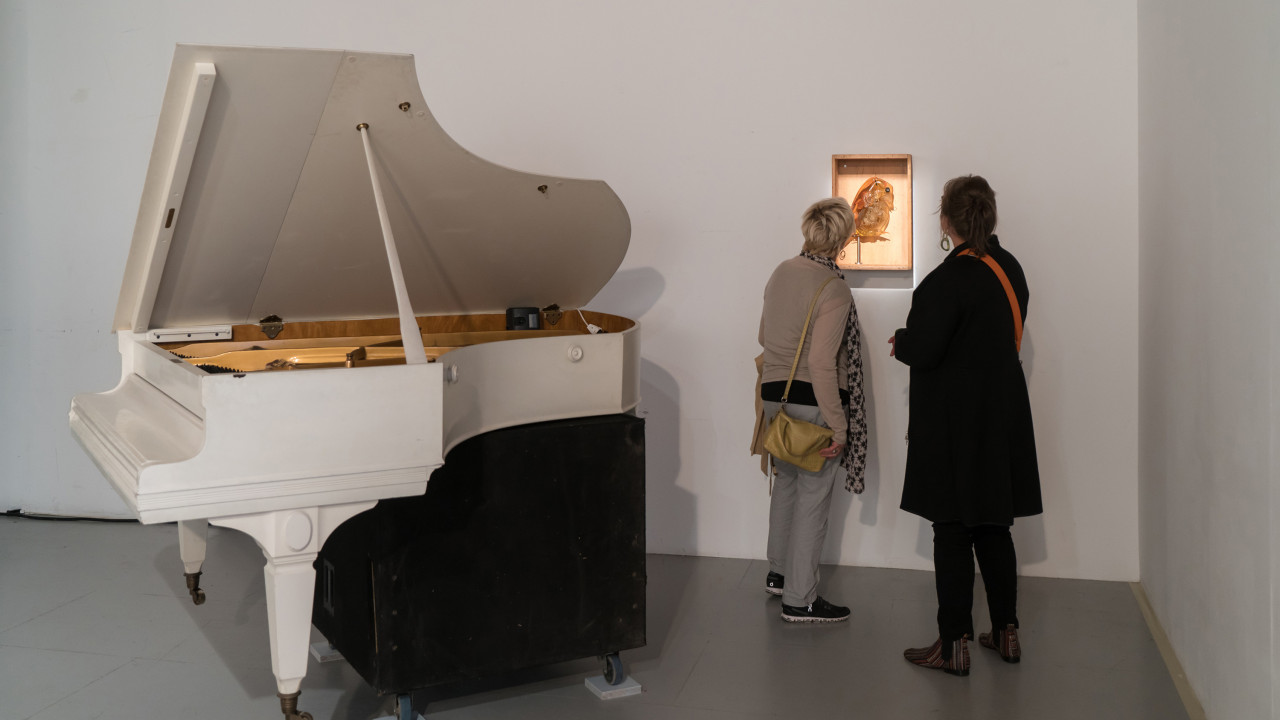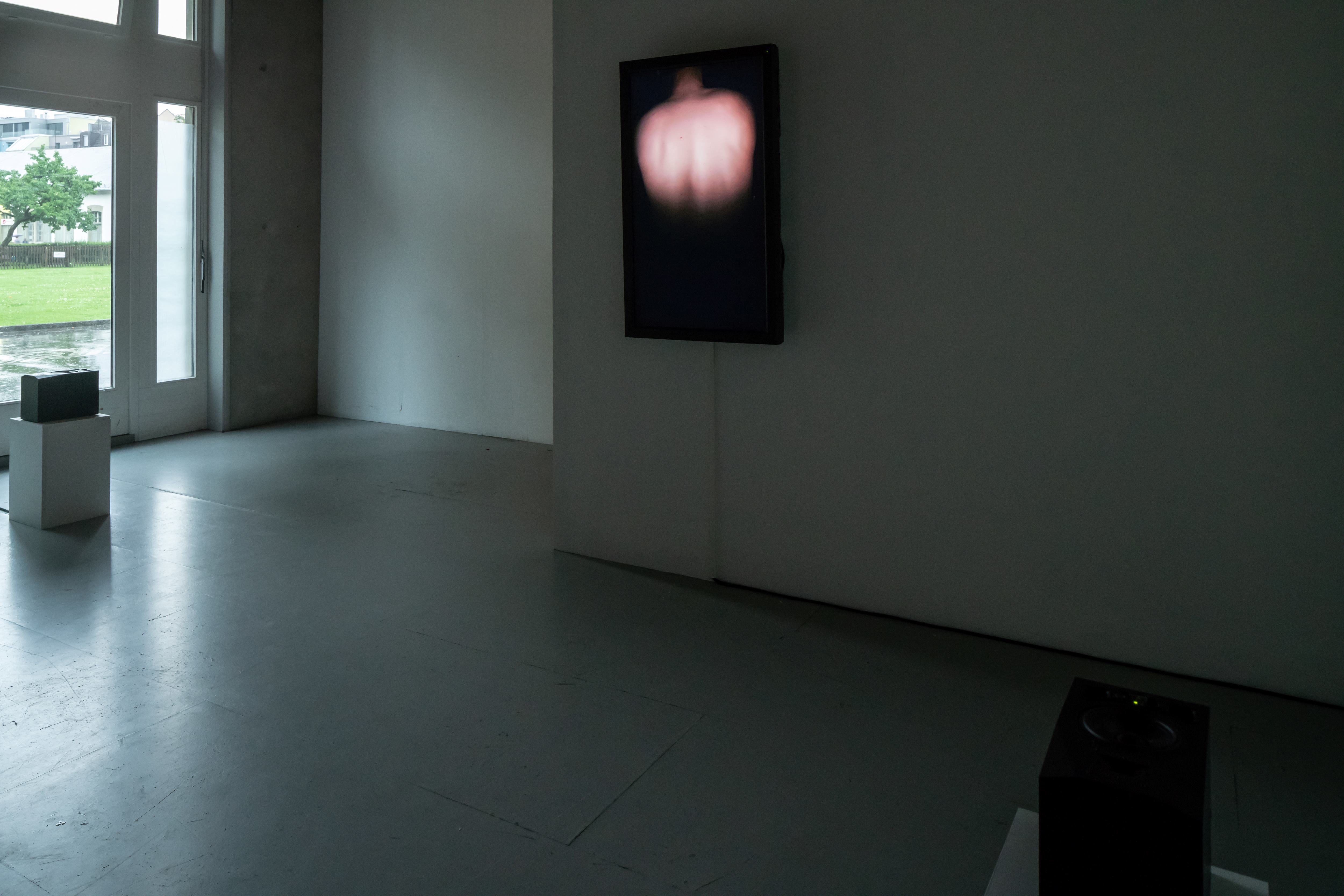Lucerne based saxophonist Christoph Erb is also founder and head of the label veto-records. After a six-month stay in Chicago, he has been exclusively improvising for more than ten years now, combining the greatest possible musical freedom with an intensified focus on the essentials: Sound and expression.
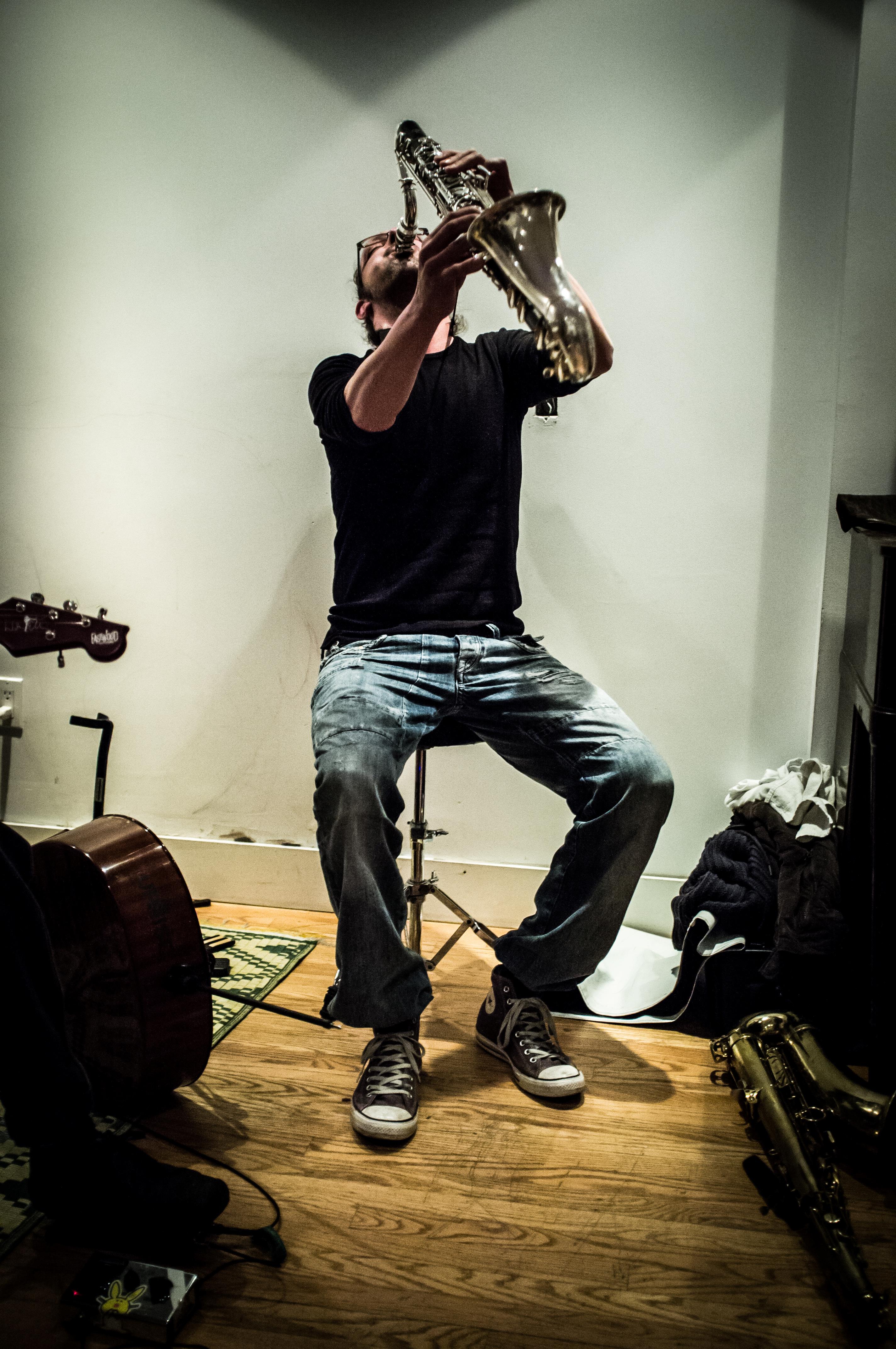
Jaronas Scheurer
Christoph Erb and I meet for lunch at Lucerne’s Neubad. Full of energy, almost effervescent, yet highly focused. This is also true of his music, which combines the intensity and expressive will of free jazz with the focus of free improvisation and precise sound research at the edges of the instrumental sound of contemporary music. His saxophone rattles, chirps and squeaks, rustling, clattering and hissing. However, this variety of sound seems highly controlled: No wild sound escapades or chaotic blow-outs. The sound is given space to expand, develop and change and when playing with other musicians, another of Erb’s qualities becomes audible: his open ears for interaction and for the other person.
Christoph Erb (saxophone) and Frantz Loriot (viola): Iki, Record: Wabi Sabi, veto-records 2023.
Amsterdam, Lucerne, Chicago
Christoph Erb grew up in Zurich. After attending music school, he founded a rock band with friends and then went on to the Lucerne Jazz School, where he studied with Nat Su and John Voirol. After two years in Lucerne, he then moved to the jazz school in Amsterdam for a gap year experience: “But after three weeks it was too much for me,” says Erb. “Everyone was with the same lecturer and they all sounded like him.” He dropped out of jazz school and went to every possible jam session in town. “The Amsterdam jazz scene turned out to be my real jazz school.” He actually enjoyed an extremely traditional education there: Listening, jamming, playing along.
Back in Lucerne, he founded his first bands in the 00s: erb_gut with Peter Schärli as guest on trumpet, Lila with Hans-Peter Pfammatter on keys, Flo Stoffner on guitar and Julian Sartorius on drums, Veto and BigVeto. “I wanted to combine composed music with improvisation,” recalls Erb. “At some point, we were so well-rehearsed with Lila that we didn’t have to do anything. We went on stage, played freely and just let the themes flow. That was great.” And then came Chicago…
Lucerne and Chicago are “Sister Cities”, which means that the city of Lucerne runs a studio space in Chicago. Christoph Erb applied for it and spent six months there in 2011: “It was an initial spark,” says Erb. “But it was tough at first. The mentality is completely different, as is the way of making music. I went to an incredible number of concerts. I was fascinated by how strong the expression of the musicians was and with much less technique. This realisation was hugely important for my own playing. I got very close to ‘jazz’ in Chicago. I actually asked myself for the first time: What is this thing called jazz?”
Christoph Erb (saxophone) und Jim Baker (piano): Motyl, Record: Bottervagl, veto-records/exchange 2012.
DIY at all levels
Despite some initial difficulties, Erb managed to gain a foothold and made connections that extended beyond his six-month stay. Several collaborations with musicians from Chicago were released on his label veto-records and shortly before the coronavirus lockdown, he organised a large Chicago-Lucerne festival, for which he was able to invite some of his friends from the windy city to Lucerne. “Amsterdam and Chicago were central for me. That’s where I found my voice.” But most important, in Chicago, Erb got to know a do-it-yourself mentality that has stayed with him to this day.
The tours were also organised differently: “No money, sleeping on the floor, but at the end of the tour all the CDs were sold: Either you put your heart and soul into it or you left it alone. Little to no funding, no financing options.” So you don’t have much choice but to do everything yourself.
veto-records
This do-it-yourself mentality is also reflected in his label veto-records: “I spent a long time looking for a label for my first record with erb_gut, checking out everything until I didn’t feel like it anymore and decided: I’d rather do it myself, in order to have everything in my own hands.” Christoph Erb not only distributes his own music on veto-records, but also a whole range of other artists: The album Close Up by Julius Amber, consisting of Elio Amberg on saxophone and Julian Sartorius on drums, was recently released, and Christoph Erb is enthusiastic: “I pick people who I think are great and who have a kick. Elio Amberg is one of them. I’ve known him since I was a child, as I was his saxophone teacher. And now he makes very interesting music and we play together.”
Christoph Erb (saxophone), Magda Mayas (piano), Gerry Hemingway (drums): Under Water Falling, Record: Bathing Music, veto-records 2023.
Current projects
He plays with Elio Amberg and Niklaus Mäder in the bass clarinet trio Erbt Mäder am Berg?, the only formation with which he actually rehearses. “The line-up is very challenging because we all play the same instrument.” He also plays in another trio with drummer Gerry Hemingway and pianist Magda Mayas, in duo with violist Frantz Loriot and in yet another trio with Emmanuel Künzi on drums and Christian Weber on bass.
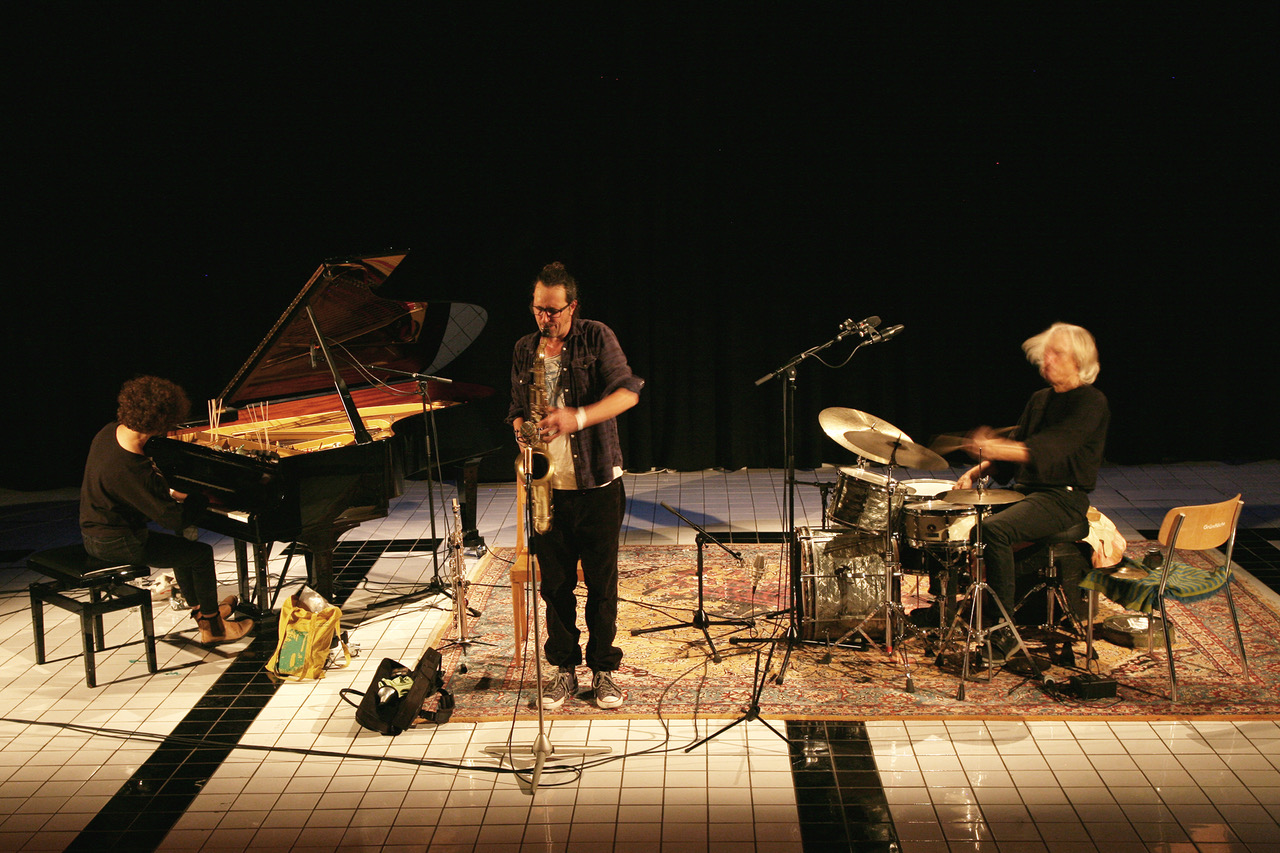
As different as these formations might be, Erb’s style is always recognisable: the will to express himself, the intensity, the focus on the edges of the conventional saxophone sound. “I’m still finding new sounds and ways of expressing myself on the saxophone, it’s probably never fully explored. For me, playing concerts is the greatest thing. And when something new happens at a concert – for me, with the band and in the overall sound – then I’m really happy afterwards. Improvisation should always be new. The main thing is no parachute.”
Jaronas Scheurer
Christoph Erb, veto-records, veto-records/exchange, Magda Mayas, Gerry Hemingway, Julian Sartorius, Frantz Loriot, Christian Weber, Flo Stoffner, Elio Amberg
New records on veto-records:
Two new LPs with Christoph Erb are on veto-records: Wabi Sabi of the Duo Erb-Loriot and Spazio Elle of the trio Erb Weber Künzi.
There ist also a digital release of the solo record ACCIAIo DOLCE FUSO. Study on Extended Sax of the Italian saxophonist Mario Gabola on veto-records.
Neo profiles:
Christoph Erb, Julian Sartorius


